What are bathroom leaks and what damage can they cause to your property?
Bathroom leaks refer to the unintended release of water from various plumbing fixtures and components within a bathroom. These leaks can occur in areas such as sinks, faucets, toilets, showers, tubs, and plumbing connections. Bathroom leaks can lead to a range of property damage, and if left unaddressed, they may result in costly repairs and potential health hazards. Here are common types of bathroom leaks and the damage they can cause:
Sink and Faucet Leaks:
- Issue: Leaks around the sink or faucet, often due to worn-out seals, loose connections, or damaged plumbing.
- Damage: Water damage to the vanity, cabinets, and surrounding areas. Over time, persistent leaks can lead to mold growth and deterioration of building materials.
Toilet Leaks:
- Issue: Leaks around the base of the toilet, at the wax ring, or within the tank components.
- Damage: Water damage to the flooring, subfloor, and surrounding areas. If left unaddressed, toilet leaks can contribute to mold growth and structural damage.
Shower and Tub Leaks:
- Issue: Leaks in the shower or tub area, often due to damaged grout, caulk, or faulty plumbing connections.
- Damage: Water damage to the walls, floors, and subfloor around the shower or tub. Persistent leaks can lead to structural issues, mold growth, and damage to nearby materials.
Pipe Leaks:
- Issue: Leaks in the plumbing pipes supplying water to or draining water from bathroom fixtures.
- Damage: Water damage to walls, floors, and ceilings, as well as potential structural damage. Pipe leaks can contribute to mold growth and pose a risk of water infiltration into other areas of the property.
Excessive Moisture and Humidity:
- Issue: Inadequate ventilation or persistent leaks can lead to elevated moisture levels and humidity in the bathroom.
- Damage: Mold and mildew growth, which can affect indoor air quality, damage building materials, and pose health risks.
Grout and Caulk Issues:
- Issue: Worn-out or damaged grout and caulk around tiles, shower enclosures, or the bathtub.
- Damage: Water penetration into the walls and subfloor, leading to structural damage, mold growth, and aesthetic issues.
Preventing and Addressing Bathroom Leaks:
Regular Inspections:
- Regularly inspect bathroom fixtures, plumbing connections, and surrounding areas for signs of leaks, water stains, or damage.
Proper Maintenance:
- Perform routine maintenance tasks, such as resealing grout and caulk, tightening loose connections, and addressing minor issues promptly.
Use of Quality Materials:
- Use quality grout, caulk, and plumbing materials during installation or repairs to ensure durability and prevent premature wear.
Prompt Repairs:
- Address leaks and plumbing issues promptly to prevent water damage and mitigate the risk of mold growth.
Proper Ventilation:
- Ensure proper ventilation in the bathroom to reduce humidity levels. Use exhaust fans and open windows when necessary.
Professional Assistance:
- If leaks persist or if there are signs of significant water damage, seek professional plumbing and restoration services to identify and address underlying issues.
By proactively addressing bathroom leaks and implementing preventive measures, homeowners can avoid extensive property damage, maintain a healthy living environment, and reduce the risk of costly repairs. Regular inspections and timely repairs are essential to ensuring the longevity and functionality of bathroom fixtures.
Learn more about our attorneys:
https://cwilsonlaw.com/meet-the-team-chad-t-wilson-law-firm-pllc-insurance-attorney/
Follow us on Social media:
https://beacons.ai/chadtwilsonlaw
Contact our Chad T. Wilson Law Firm Office Locations to Schedule a free Consultation.
Chad T. Wilson is an attorney whose firm specializes in property insurance disputes.
« Back to Glossary Index





